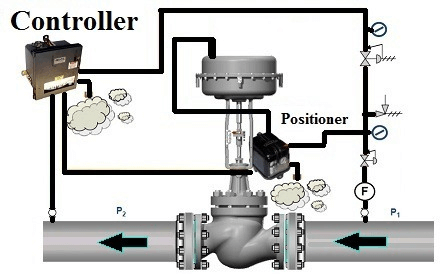
Maximize Power Financial Savings and Convenience With Advanced Building Automation Controls
In the realm of contemporary style and facility monitoring, the combination of innovative building automation controls stands as a pivotal development. By harnessing the power of automation, structures can adjust, respond, and develop in means that were once unthinkable.
Power Performance Conveniences
Power effectiveness benefits can significantly decrease power usage and functional costs in structures. Energy-efficient systems, such as innovative structure automation controls, can enhance the usage of resources like heating, cooling, and lighting, leading to lower energy expenditures over time.
Furthermore, improved power performance can extend the life-span of structure tools and systems. By operating much more successfully, HVAC systems, lighting fixture, and other building elements experience less damage, leading to reduced upkeep and replacement prices. Furthermore, energy-efficient buildings commonly regulate higher residential property values and rental prices, giving long-term financial benefits to owners.
Additionally, power performance can enhance owner comfort and productivity. Effectively regulated interior settings with ideal lights and thermal conditions develop a more pleasant and favorable work space, leading to enhanced staff member fulfillment and performance. Generally, the power efficiency benefits related to sophisticated building automation controls are multifaceted, incorporating expense savings, ecological stewardship, and resident health.
Boosted Comfort Control
Enhancing comfort control in structure settings calls for an innovative combination of advanced automation systems for optimal resident well-being. By utilizing advanced structure automation controls, centers can customize the interior setting to satisfy the specific needs and choices of owners. control valves.
Improved comfort control goes past fundamental temperature adjustments. It consists of features such as personalized settings, occupancy sensing units, and natural light application to produce a receptive and dynamic atmosphere. By incorporating these advanced controls, buildings can not only improve convenience however also boost power efficiency by maximizing system operations based upon real tenancy and usage patterns. Eventually, prioritizing passenger comfort through innovative automation systems brings about a more delightful and healthier interior atmosphere.
Functional Efficiency Improvements

Furthermore, the implementation of real-time monitoring and analytics tools allows building operators to determine energy inefficiencies and operational abnormalities immediately. By continually monitoring power usage patterns and system efficiency metrics, changes can be made in real-time to optimize energy usage and ensure peak operational effectiveness. control valves. Additionally, incorporating demand reaction approaches into building automation controls can even more enhance functional performance by dynamically readjusting energy usage based upon grid conditions and prices signals
Indoor Environment Optimization
Effective indoor environment optimization is a fundamental aspect of structure automation controls, making certain owners' comfort and health while making the most of energy savings. By utilizing innovative sensing units and controls, developing automation systems can continually change and keep an eye on temperature, humidity degrees, air high quality, and ventilation to create an optimal indoor atmosphere. Keeping regular and comfy problems not just boosts passenger contentment yet likewise improves performance and total well-being.
Indoor environment optimization additionally plays a vital function in power performance. By fine-tuning ventilation, heating, and cooling systems based on real-time information and tenancy patterns, building automation controls can significantly minimize power consumption - control valves. Executing approaches such as demand-controlled air flow and thermal zoning can help decrease energy waste while making certain that each area of the structure receives the essential conditioning.

Sustainable Environment Production
Structure automation manages not only optimize interior climate conditions for power performance and passenger comfort yet additionally lay the structure for producing a sustainable setting via calculated administration of systems and resources. By incorporating innovative building automation innovations, such as sensors, actuators, and smart software, facilities can change and keep track of power use in real-time to decrease waste and lower their carbon impact. These systems allow anticipating maintenance, identifying possible problems prior to they intensify and optimizing tools performance to boost durability and efficiency.
Moreover, sustainable setting development extends past energy management to incorporate water conservation, waste decrease, and indoor air top quality enhancement. Building automation controls can control water usage, spot leakages, and make sure proper garbage disposal methods, adding to general sustainability initiatives. Additionally, by checking and controlling air flow and purification systems, visit this web-site these innovations boost resident health and wellness and productivity while decreasing power consumption connected with heating and cooling operations.
Verdict
In final thought, advanced building automation manages deal significant benefits in regards to power savings, comfort control, operational efficiency, interior environment optimization, and developing a lasting environment. By carrying out these controls, buildings can accomplish optimum efficiency while reducing energy consumption and enhancing owner comfort. It appears that using sophisticated automation technology is essential in improving structure efficiency and producing a much more sustainable future.
Power performance advantages can significantly reduce energy consumption and functional prices in buildings. Overall, the energy performance advantages linked with innovative structure automation controls are complex, incorporating price financial savings, ecological stewardship, and passenger health.
Furthermore, integrating demand feedback methods into structure automation controls can additionally improve operational performance by dynamically changing power use based on grid conditions and pricing signals.
Structure automation controls not just enhance indoor environment conditions for power effectiveness and occupant convenience however also lay the structure for producing a lasting atmosphere through critical administration of resources and systems.In final thought, progressed building automation regulates offer substantial benefits in terms of energy cost savings, comfort control, functional efficiency, indoor climate optimization, and Get More Information developing a sustainable atmosphere.